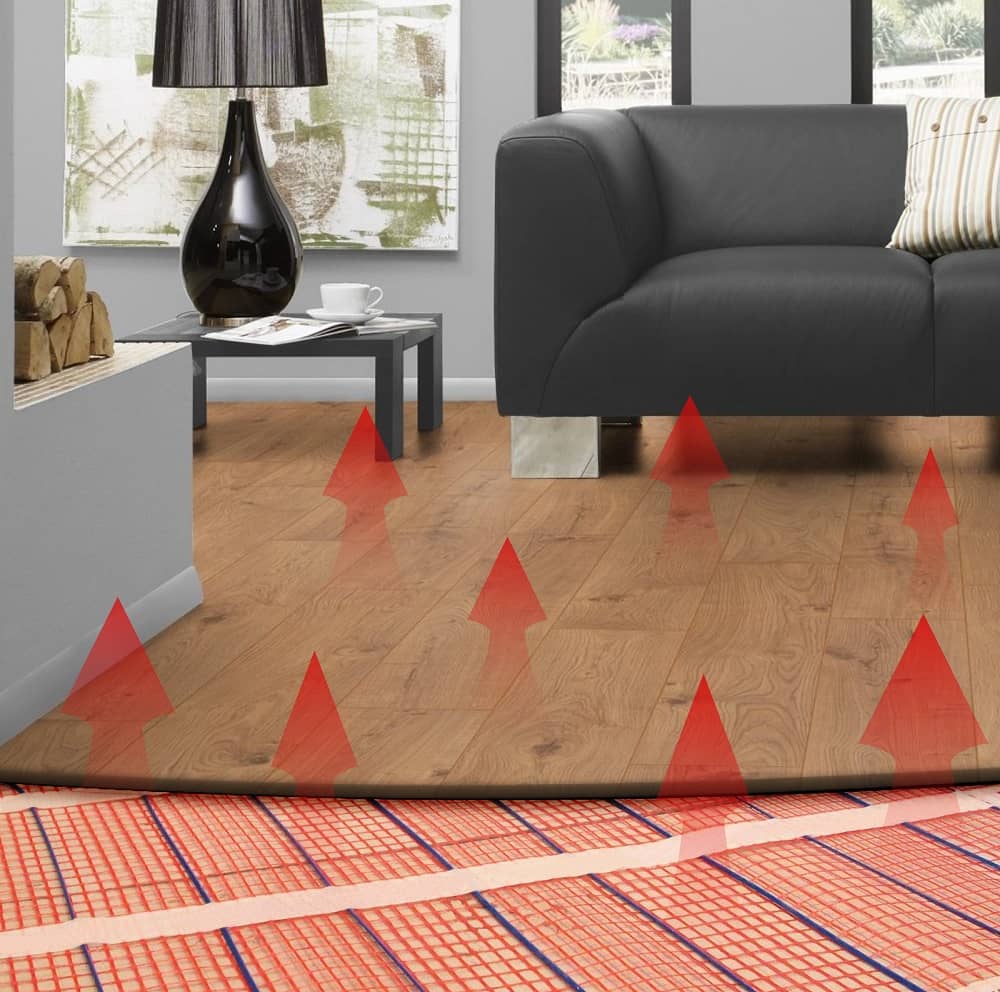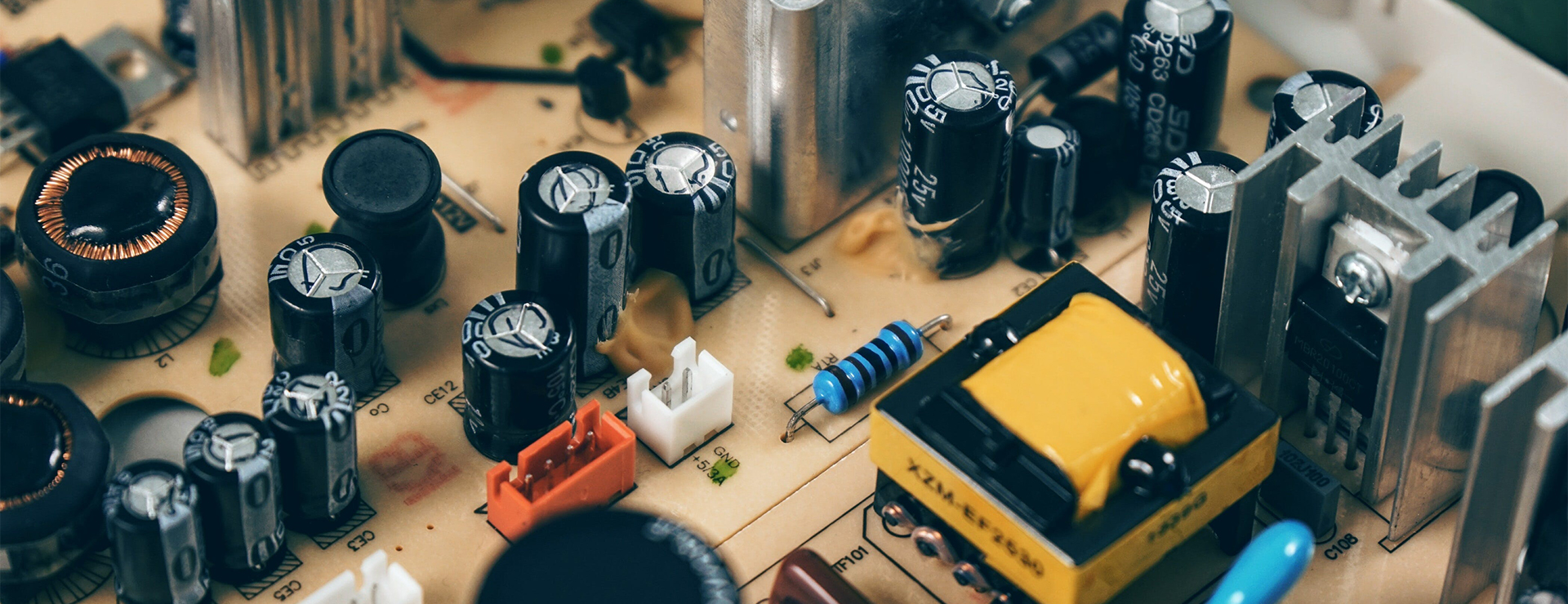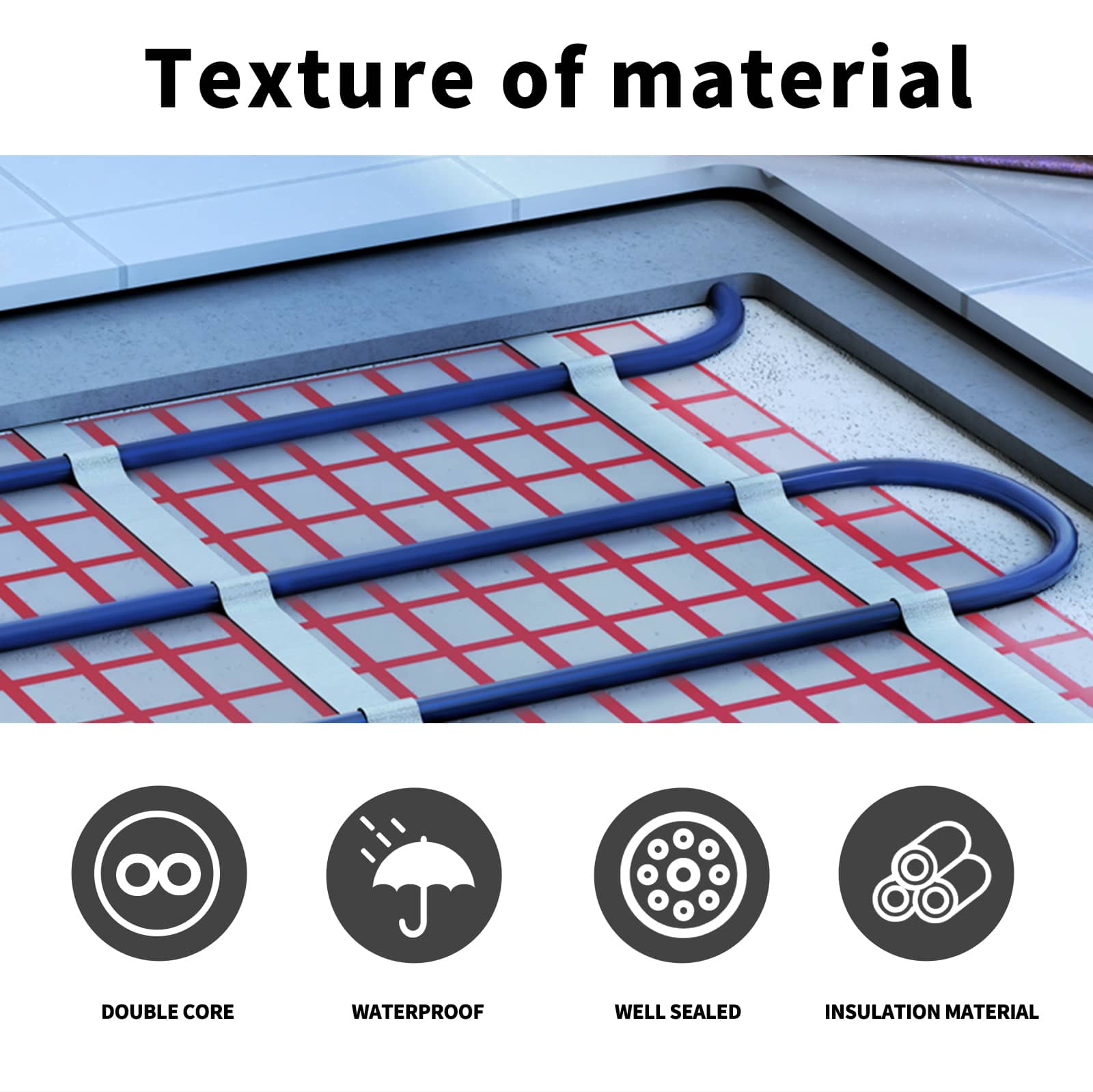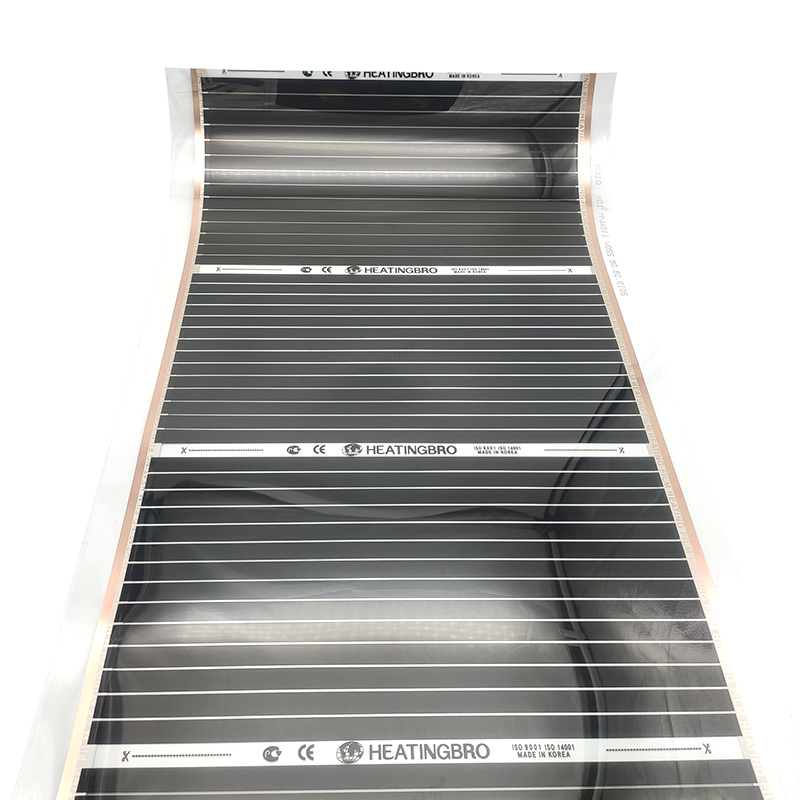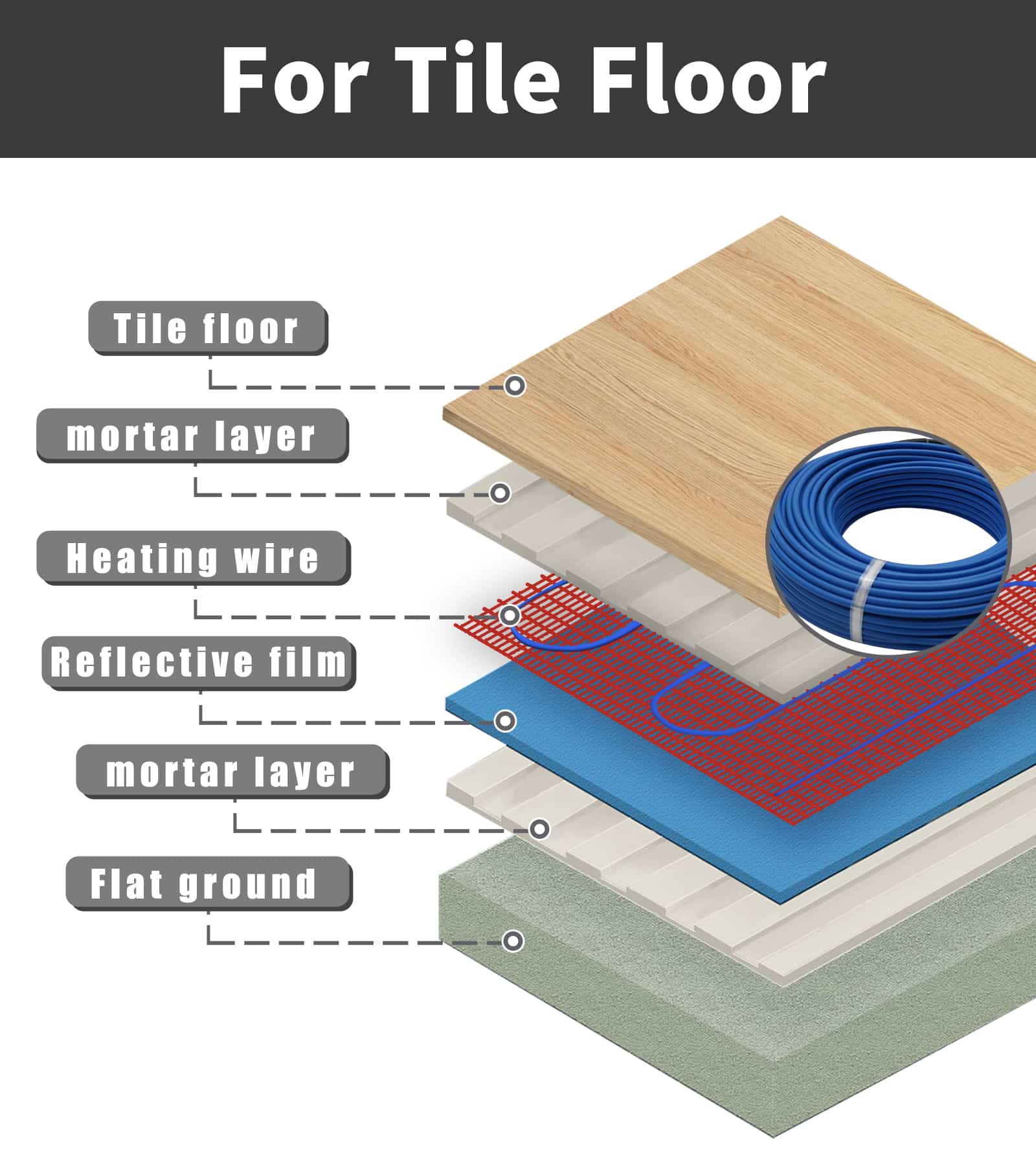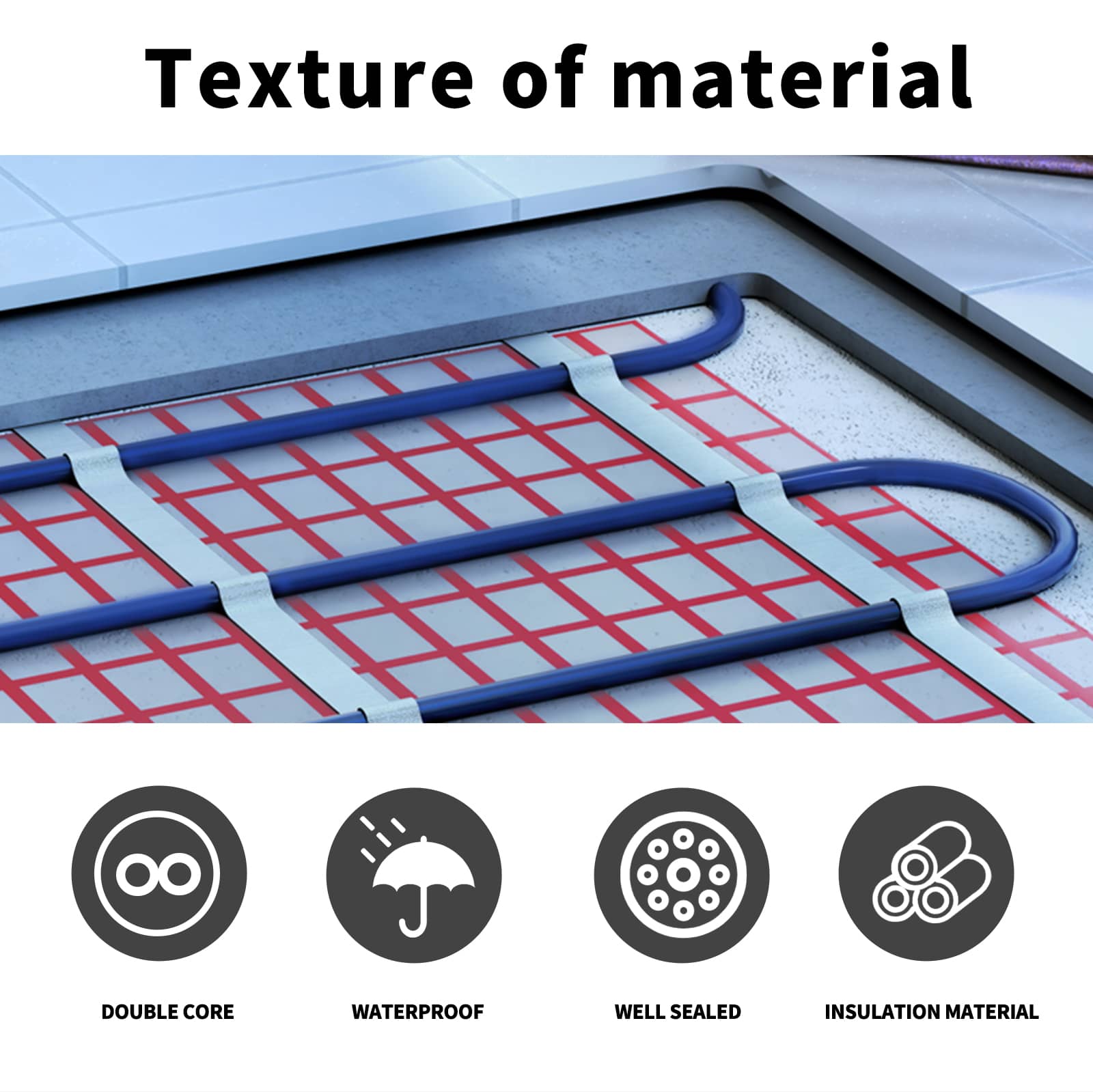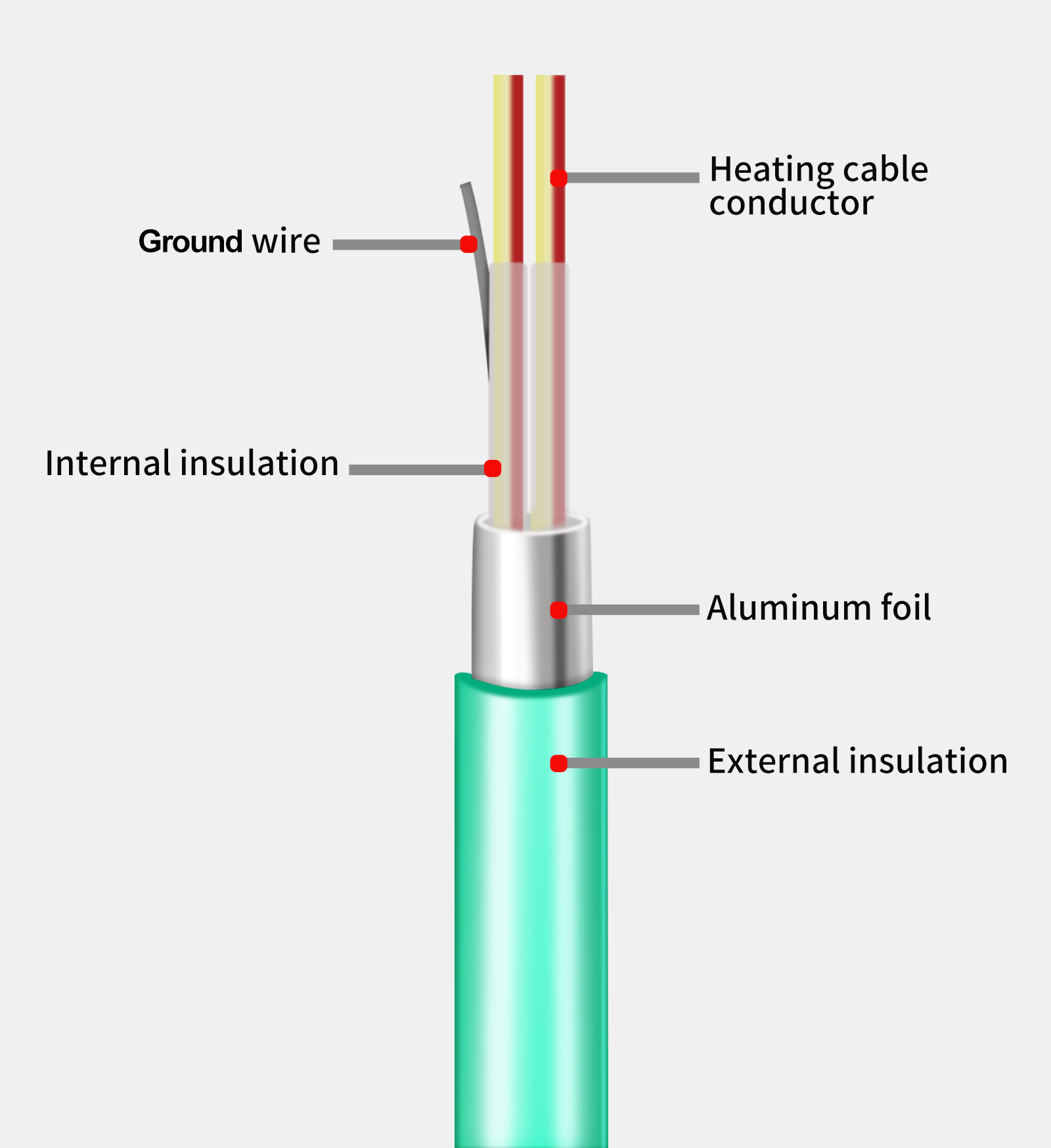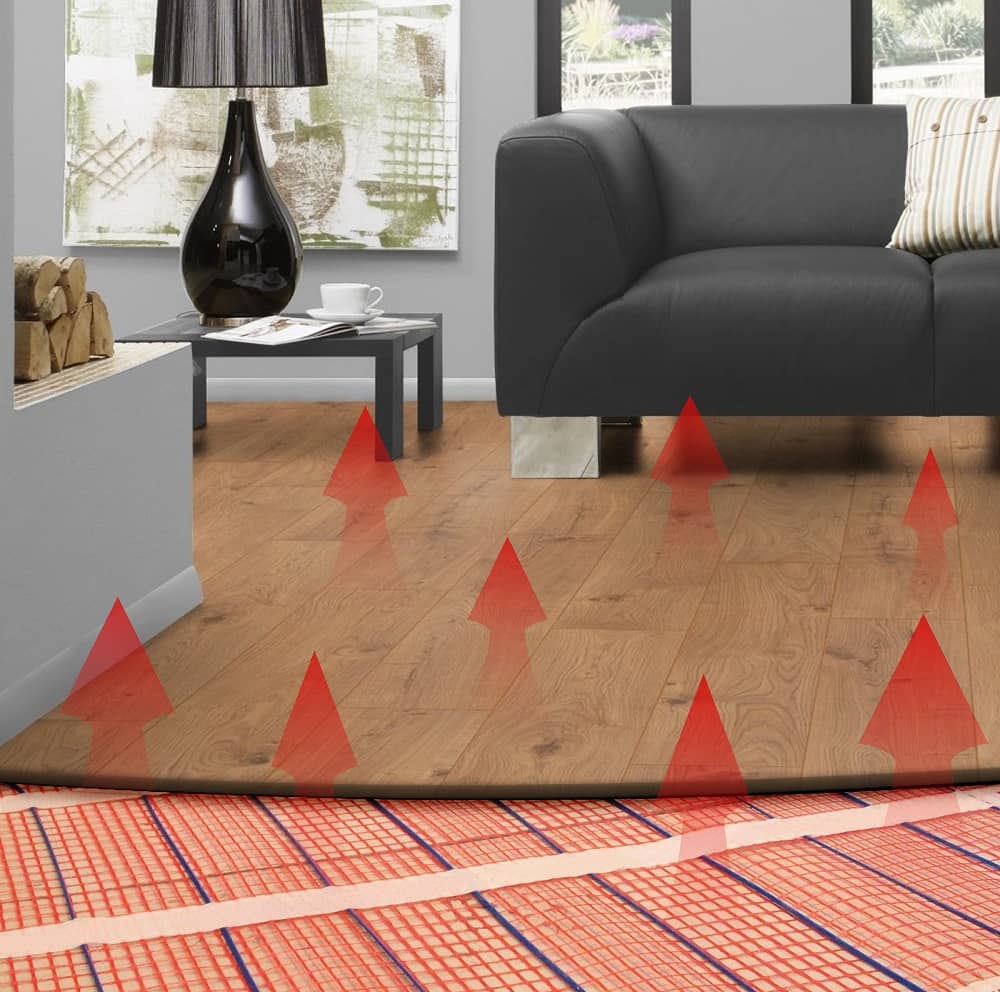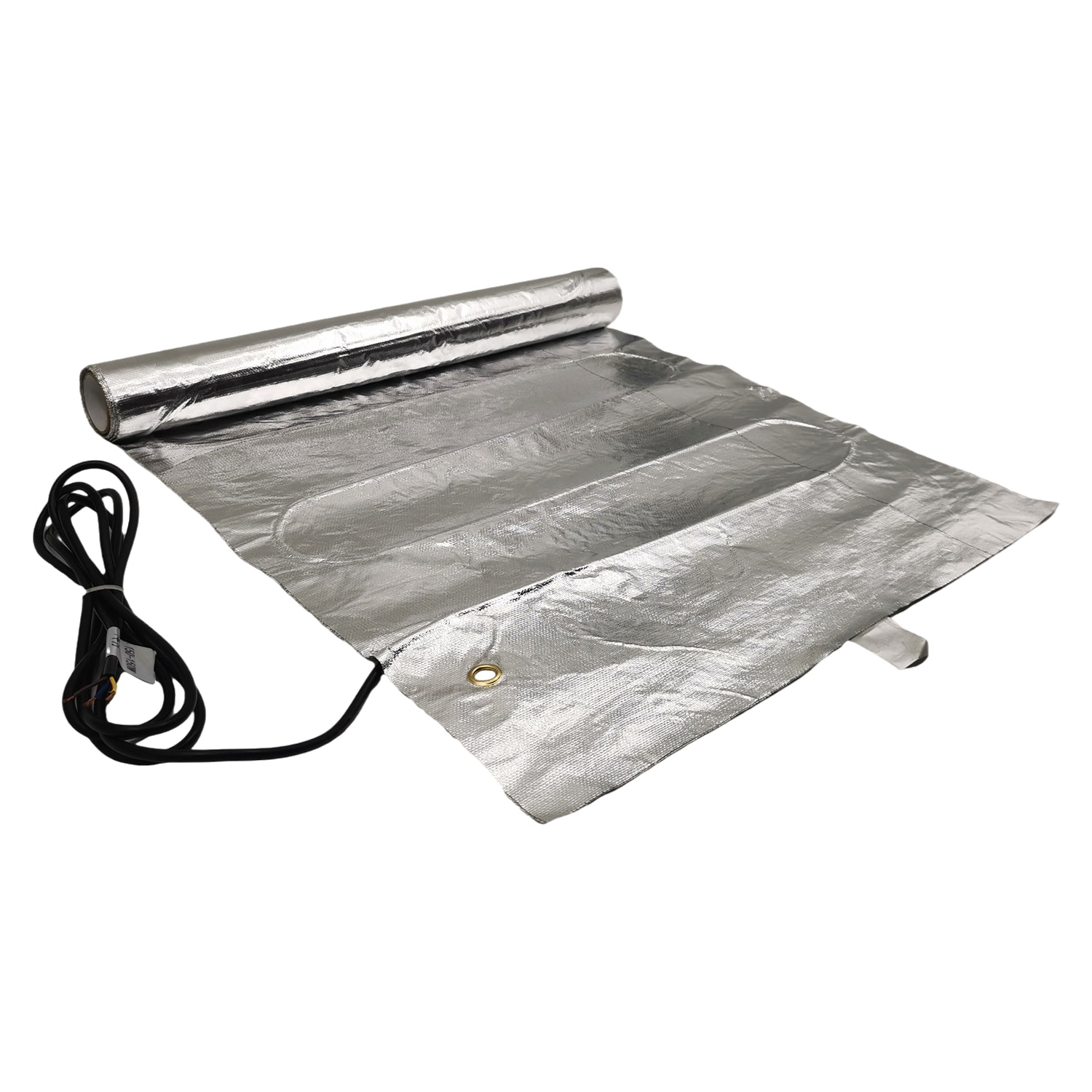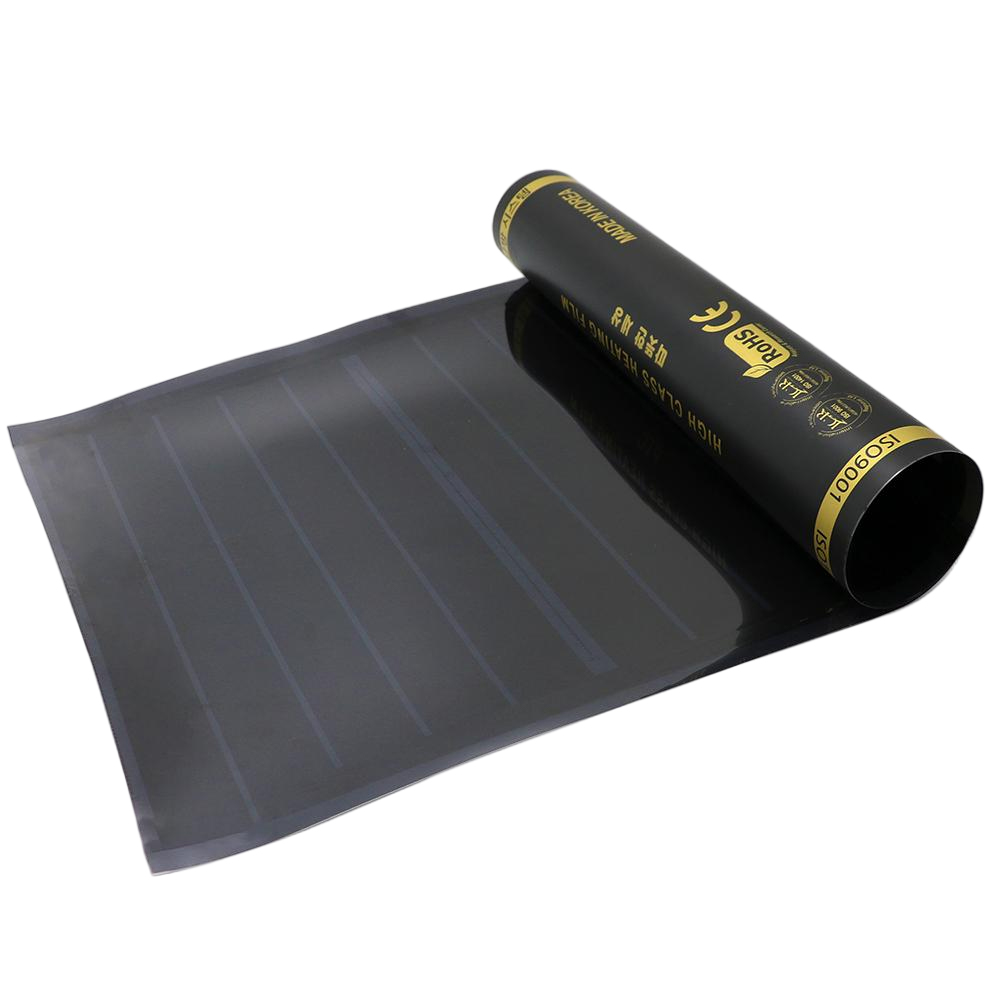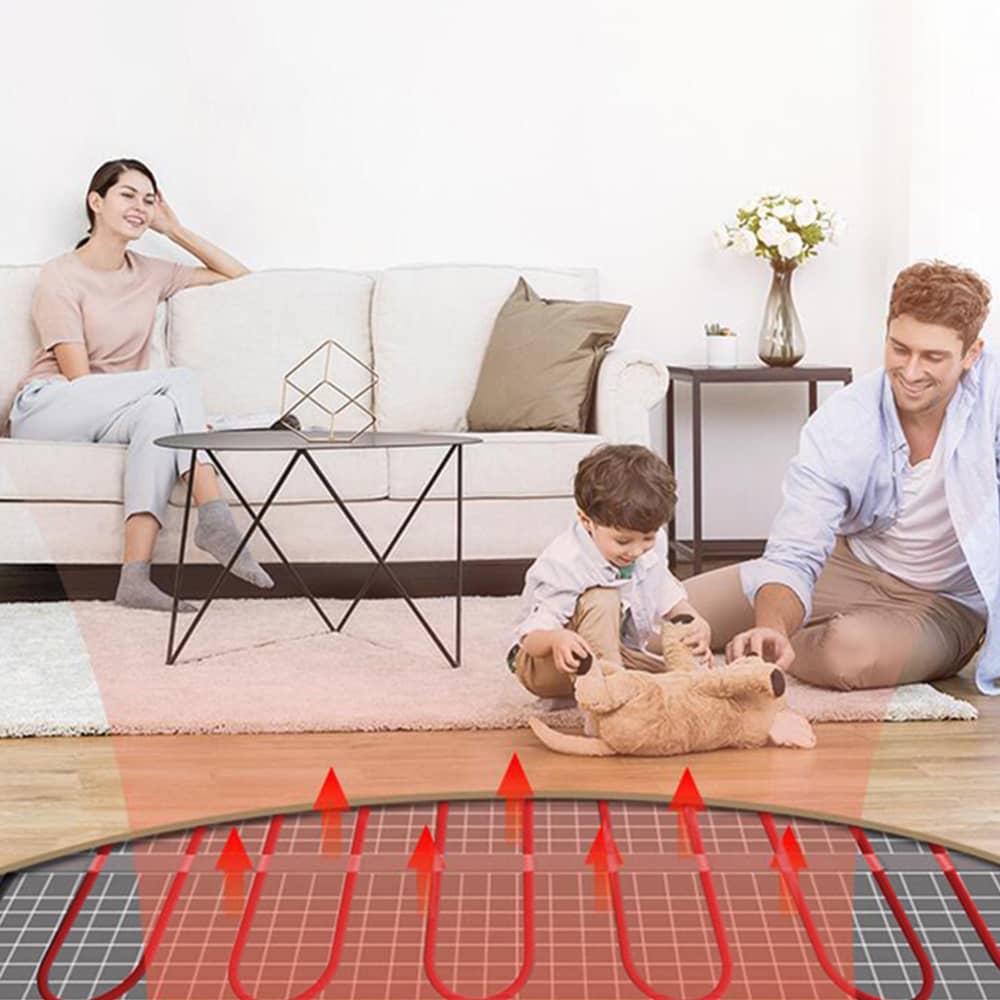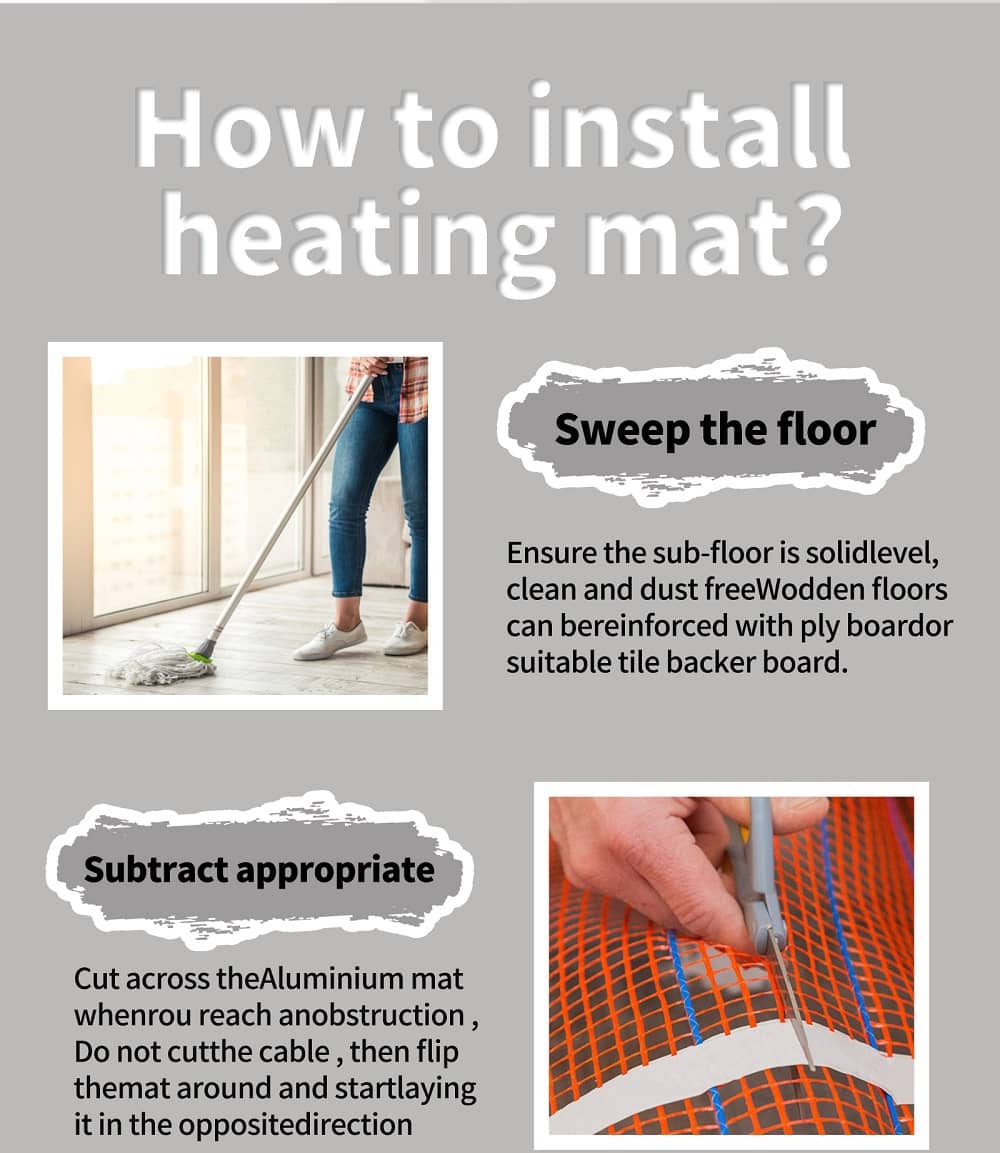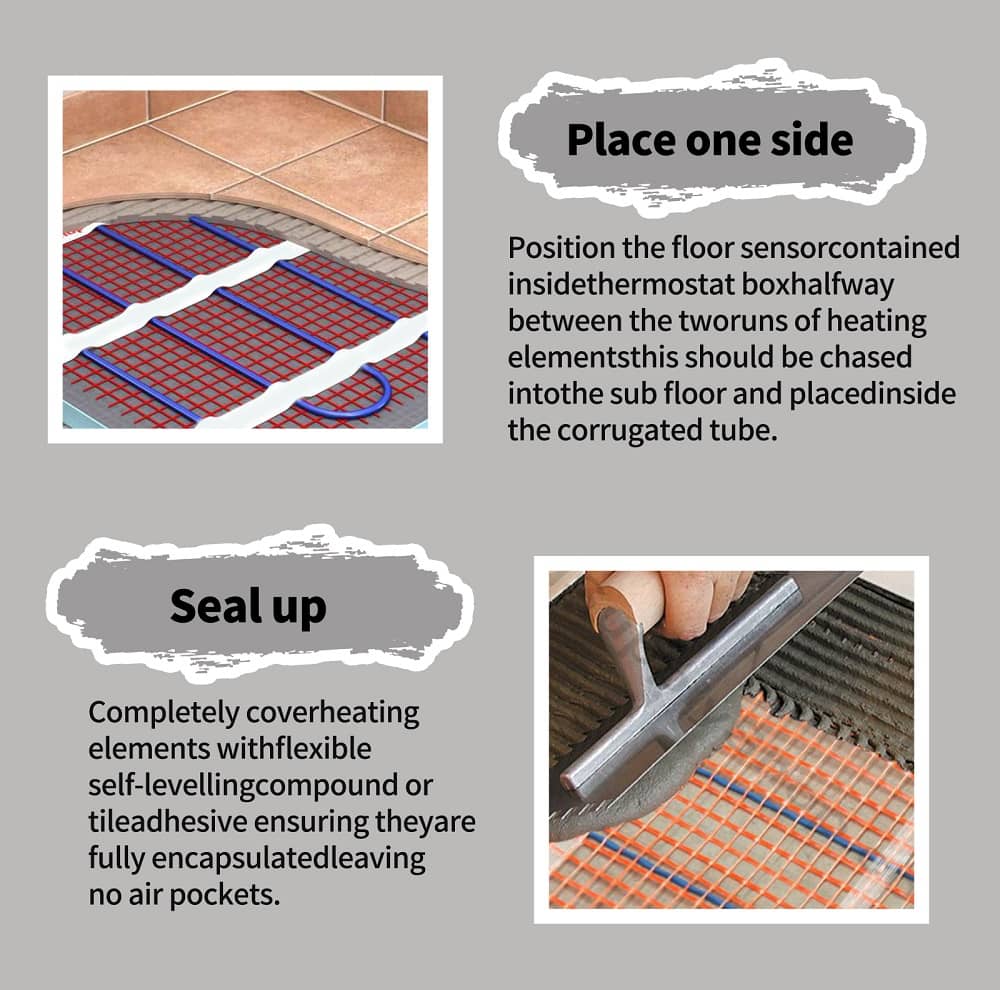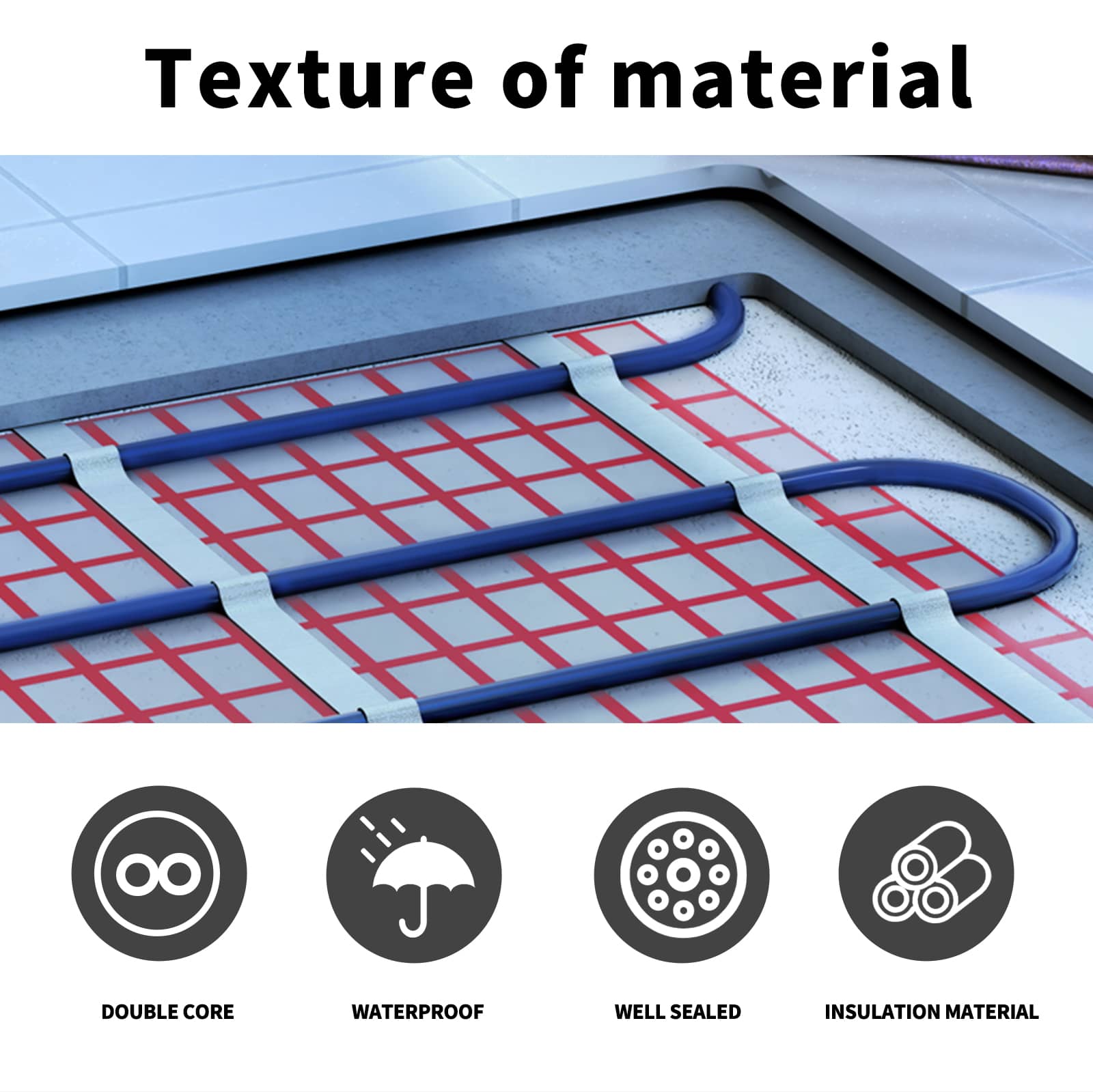How should heating cables avoid proximity to low-temperature objects/areas
Avoid placing heating cables near low-temperature objects or areas. The core approach involves four key measures: "physical isolation, optimized installation, enhanced insulation, and power adjustment" to minimize heat loss caused by low-temperature conduction and cold radiation, ensuring efficient heating and uniform temperature distribution.
1.First, clarify the "low-temperature objects/areas to be avoided."
First, accurately identify the sources of risk, plan the laying routes in advance, and avoid direct contact or close proximity.
- Low-temperature objects: exterior walls, windows (glass/window frames), doors, basement floor slabs, cold water pipes, air conditioning condensate pipes, and metal components (high thermal conductivity);
- Low-temperature areas: Room corners (poor air circulation, accumulation of cold airflows), window sill areas (cold radiation from glass), doorways (frequent door openings allowing cold air infiltration), and exposed outdoor pipeline sections.
2.Core measures: Physical isolation and enhanced insulation
By adding insulation layers or isolation structures to block low-temperature conduction and reduce heat loss:
Additional insulation layer added to low-temperature areas/object surfaces.
Ground heating scenario:
- Under the window and on the inner side of the exterior wall, on the basis of the original insulation layer, an additional 5-10mm thick high-density extruded board is added, and the joint is sealed with aluminum foil tape to form a "double insulation";
- The thickness of the insulation layer in the basement or first floor should be increased by 30% compared to the standard to avoid downward heat dissipation from the ground.
- If the pipeline needs to pass through outdoor or low-temperature areas, wrap thick insulation cotton around the outside of the cable, and then cover it with aluminum foil or iron sheet outer protective layer to prevent direct contact of cold air with the cable and pipeline.
Maintain a safe distance between cables and low-temperature objects
- Ground heating: The distance between the cable and the inner surface of the exterior wall and the edge of the window frame should be ≥ 100mm (which can be relaxed to 150mm based on the original standard), to avoid the cable being tightly attached to the low-temperature wall;
- Pipeline insulation: The distance between the cable and the cold water pipeline or metal components should be ≥ 50mm. If they must cross, insulation sleeves should be used to isolate the two pipelines at the intersection to prevent low temperature conduction to the heating cable;
- It is prohibited to lay cables directly on the surface of metal components, and ceramic insulators or insulation pads should be used to separate them (with a spacing of ≥ 20mm).
3.Optimize laying: adjust spacing and power locally to compensate for heat loss
Low temperature areas experience rapid heat loss, which can be compensated for by increasing spacing and local power to avoid slow heating:
Encrypt the spacing between cables in low-temperature areas
- Ground heating: The normal area spacing should be based on the design value, and the spacing between low-temperature areas such as under windows and corners should be reduced by 20% to 30% to increase the heating power per unit area;
- Pipeline insulation: The spiral winding spacing of cables in low-temperature sections (such as outdoor exposed sections) is reduced by 1/3 compared to normal sections, increasing local heat density.
Select high power density cables for special areas
- If the heat loss in the low-temperature area is extremely fast, it can be locally replaced with high-power density cables to directly enhance the heating capacity;
- Attention: High power cables need to be equipped with suitable temperature controllers (with sufficient output power), and the spacing should not be too small to avoid local overheating.
4.Detail protection: reduce the accumulation of cold air flow and low temperature infiltration
Optimize room ventilation and sealing
- In low-temperature areas such as under windows and at doorways, it is necessary to ensure good sealing of doors and windows (replacing aging sealing strips, installing door bottom stop strips) to reduce the infiltration of cold air;
- Avoid setting frequently open ventilation openings in the heating area. If ventilation is required, choose to ventilate for a short period of time after reaching the heating standard to avoid continuous low-temperature interference during ventilation.
Prevent the formation of "cold air circulation" in low-temperature areas
- When using ground heating, a 5-10cm heat dissipation gap can be reserved in the area under the window (such as furniture not tightly attached to the ground under the window) to allow the heated air to form convection and reduce the accumulation of cold air flow;
- High rise spaces such as industrial workshops and low-temperature areas (such as corners and floors) can be equipped with small circulating fans to promote air flow and avoid the continuous existence of local low-temperature areas.
5.Special handling for special scenarios
Outdoor pipelines or low-temperature environments (below -10 ℃)
- Wrap the outer side of the cable with "insulation cotton+waterproof outer protective layer" to completely isolate rain, snow, and cold air;
- Install moisture-proof sealing caps at both ends of the pipeline to prevent moisture from entering the insulation layer and causing icing, indirectly affecting cable heat dissipation.
Ground heating near large areas of glass
- Stick insulation film on the inside of the glass (to reduce cold radiation), and lay aluminum foil reflective film on the insulation layer under the window to reflect the heat generated by the cable upwards and reduce downward loss;
- When laying cables, the area under the window can be encrypted using a "U-shaped folding" method to ensure sufficient heating power in that area.
Through the above measures, the impact of low-temperature objects/areas on heating cables can be significantly reduced, ensuring that the heating rate meets the standard and the temperature distribution is uniform. If the area of the low-temperature zone is too large (such as the entire exterior wall without insulation), it is recommended to first carry out insulation renovation of the building main body, and then install heating cables to avoid continuous low heating efficiency due to insufficient basic insulation.